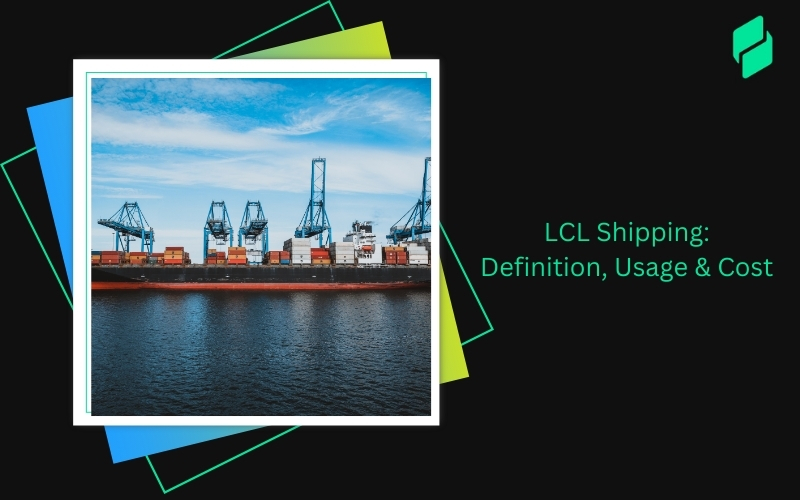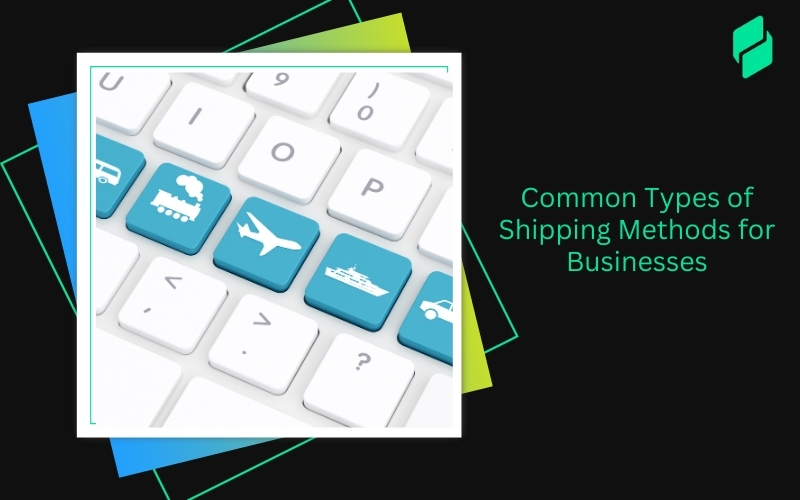Optimize your business: use unlimited savings with Pazago fulfilled now!
Get Started ->When you're a business owner shipping goods overseas, you may face unexpected challenges like rough seas or unforeseen accidents.
But how do you ensure that your cargo or vessel is safe from such risks? This is where marine insurance underwriting steps in!
Marine insurance underwriting is crucial for global trade and shipping. It provides a safety net for businesses engaged in importing and exporting goods. The process ensures assessment and issuance to offer the right coverage for shipping and maritime activities.
This blog will walk you through the marine insurance underwriting process.
So, let’s begin our sail!
Marine Insurance Underwriting Process Overview

The marine insurance underwriting process includes evaluating, assessing, and providing coverage for risks related to sea voyages, cargo transport, and vessels.
Underwriters consider potential risks involved in the shipment of goods and decide the terms and conditions under which coverage will be offered.
Intrigued to understand the purpose and Importance?
Marine insurance underwriting aims to safeguard businesses from the unpredictable dangers of sea transport.
Whether cargo damage is caused by storms or machinery breakdown on a vessel, marine insurance underwriting plays a vital role in ensuring smooth trade operations.
By managing risks, underwriters provide businesses with peace of mind. They know their financial interests are protected, even when unforeseen challenges arise. Marine insurance underwriting helps maintain the trust and stability required for international trade to flourish.
Also Read: Inland Marine And Ocean Marine Insurance Comparison: Coverage, Benefits, Difference
Fundamental Principles in the Marine Insurance Underwriting Process

Understanding the fundamental principles behind marine insurance underwriting helps businesses and underwriters work together effectively. Here’s a breakdown of the most important concepts:
- Indemnity
The principle of indemnity ensures that the insured party is compensated for their actual loss. In marine insurance, the policy covers the cost of damaged or lost cargo but does not allow for profit from the loss.
- Insurable Interest
Insurable interest means that the insured party must have a legitimate stake in the goods or vessel being insured. For instance, a cargo owner has an insurable interest in their goods because they would suffer financially if the goods were damaged.
- Utmost Good Faith
In marine insurance underwriting, utmost good faith requires the insured and the insurer to be completely transparent. This means providing all the necessary information about the cargo, vessel, and potential risks.
- Proximate Cause
Proximate cause helps determine the primary reason behind a loss. If a ship sinks due to a storm, the proximate cause is the weather, which the insurance will cover. This principle helps underwriters decide whether the event is covered under the policy.
- Subrogation
Subrogation allows the insurer to recover the costs from a third party responsible for the loss after the claim has been paid. For example, if a vessel is damaged due to another ship’s negligence, the insurance company can seek reimbursement from that ship’s owner.
- Contribution
This principle applies when more than one insurance policy covers the same risk. Contribution ensures that all insurers share the claim payout proportionally, preventing over-compensation to the insured.
Also Read: Understanding the Basis of Valuation in Marine Cargo Insurance
Let’s examine how this works! Understanding each step in the underwriting process will help you know how it all comes together to safeguard your assets.
The Marine Insurance Underwriting Process

Whether shipping goods or operating a vessel, this process manages and protects your interests well.
- Risk Assessment: Taking the First Look
The first step in the marine insurance underwriting process is risk assessment. Think of this as getting to know the playing field before moving. Underwriters need to understand the potential risks involved in your shipping activities.
Here’s how it works:
- Cargo Type
Is it perishable goods, heavy machinery, or something delicate like glassware? Different cargo comes with different levels of risk.
- Shipping Route
The route your goods are travelling matters. Is the route prone to storms? Is it a high-traffic area where accidents are common? Is there political instability? These factors are considered when assessing risks.
- Vessel Condition
What about the vessel carrying the cargo? If it’s an older ship, the risk could be higher than that of a new, well-maintained vessel.
- Information Gathering: The More You Know!
After identifying the risks, it’s time to gather detailed information. This is a crucial step because the more data an underwriter has, the better they can tailor the policy to fit your specific needs.
Here’s what underwriters usually look for:
- Details About the Cargo or Vessel
They need to know exactly what’s being shipped and how it’s transported. Is the cargo sensitive to temperature? Is the ship fitted with the latest safety equipment?
- Shipping Schedule and Routes
They’ll need to understand the timeline and the specific routes the ship will take. Different regions may have different risks.
- Historical Data
Underwriters may also check previous claims and incident reports from similar shipments or vessels. If a similar cargo faced certain issues in the past, they’ll factor that in.
It’s a bit like prepping for an exam. The more information you have, the better equipped you are to handle any surprises that might come your way. And in marine insurance, you don’t want to leave surprises to chance!
- Evaluation and Decision Making: Crafting the Right Policy
Now comes the decision-making part. With all the information in hand, underwriters move into the evaluation phase, where they analyse the risks and decide on the appropriate coverage and premium.
Here’s what they focus on:
- Risk Analysis
Based on the information gathered, underwriters weigh the likelihood of potential risks and assess whether they are acceptable or pose too great a threat.
- Setting the Premium
Once they have a clear picture, underwriters determine how much the insurance will cost. The more complex or high-risk the shipment, the higher the premium. But if your risks are lower, you might get a more affordable policy.
- Customising the Policy
This is where underwriters decide what’s covered and what’s excluded. For example, if your route passes through a high-piracy area, they might offer coverage specific to that risk but exclude other things like spoilage.
- Policy Issuance: You’re Covered!
Finally, after the evaluation, you reach the last step: policy issuance. This is the part where you officially receive your marine insurance policy, and your journey gets that much safer.
Here’s what happens:
- Clear Documentation
The policy will outline everything in black and white—what’s covered, the premium, exclusions, and the claim process. This document becomes your safety net. If something goes wrong during the shipment, you know exactly what to do and what’s protected.
- Payment of Premium
You'll pay the premium once the policy is issued, and your coverage begins. Now, you can breathe easy knowing that your business is protected even if things go awry.
- Continuous Updates
A good underwriter won’t just hand you a policy and disappear. They’ll keep you informed about any changes that could affect your coverage. For example, if regulations change or if new risks arise on your shipping route, they’ll help adjust your policy accordingly.
By the time you reach the policy issuance stage, all the heavy lifting has been done. The risks have been assessed, the coverage has been tailored to your specific needs, and your business can move forward confidently.
Also Read: Understanding Ocean Shipping and Transport Services
Types of Marine Insurance Policies

Marine insurance comes in different types to suit various business needs. Each policy type covers a different aspect of shipping operations:
- Cargo Insurance
Cargo insurance covers goods during transit, whether by sea, air, or land. It protects the cargo owner from losses due to damage, theft, or other unforeseen events during transport.
- Hull Insurance
Hull insurance covers ships and their machinery. This policy is essential for vessel owners and operators to safeguard their investments in case of accidents, breakdowns, or other incidents affecting the vessel.
Also Read: Claim Process and Required Documents in Marine Insurance
Benefits and Challenges of the Marine Insurance Underwriting Process
Marine insurance underwriting offers numerous benefits to shipping and global trade businesses. However, it also faces some significant challenges.
Here is a clear picture helping you see both sides at a glance.
Also Read: Understanding Shipping Insurance And Coverage For 2024
However, the marine industry is evolving, and so is the way we handle insurance. Let’s explore a world where advanced technology transforms risk assessment!
Recent Developments in the Marine Insurance Underwriting Process
The world of marine insurance underwriting is not stagnant. Here are some recent trends transforming the industry:
- Advanced Risk Models
With better data and predictive models, underwriters can now assess risks with greater accuracy, leading to more tailored policies.
- Digital Transformation
Digital tools have made the marine insurance underwriting process more efficient. Automation reduces the chances of human error, and digital platforms make it easier to issue policies quickly.
- Enhanced Data Analytics
Better data analytics helps underwriters assess emerging risks, such as cyber threats to vessel systems, and adjust policies accordingly.
- New Coverage Innovations
As the shipping industry evolves, new coverage options are available. These innovations ensure that businesses have the right protection for modern maritime risks.
Also Read: Emerging Logistics Tech Trends and Their Meaning
Pazago uses smart solutions to ensure smooth sailing for your business, protecting your cargo and vessels at every step. Ready to let the hero take the wheel?
Let's explore how Pazago is changing the game!
Why Pazago is the Ideal Solution for Marine Insurance

Like a trusted captain guiding your ship through the roughest seas, Pazago is here to simplify the marine insurance underwriting process! Marine insurance is a critical part of global trade, and the correct underwriting can make all the difference.
Why leave your cargo or vessel at risk? Contact Pazago today and secure the future of your business with top-tier marine insurance solutions.

With Pazago, you benefit from:
- Pazago’s cargo insurance is a fully digital approach, allowing you to manage your policy without any paperwork.
- The claims process is straightforward and hassle-free, making it easy to handle any issues quickly.
- Your cargo is securely insured through Pazago’s partnership with ICICI Lombard, ensuring reliable shipment coverage.
Let Pazago guide you through the complexities of marine insurance underwriting and give your business the security it needs to thrive in global trade.
Worry less, ship more—secure your cargo with Pazago’s reliable insurance today!
Also Read: Understanding Key Differences: Carrier Liability Vs Cargo Insurance


.png)








